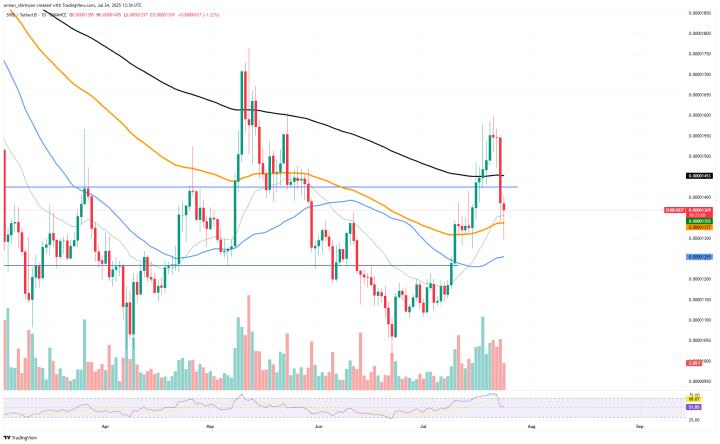Yesterday afternoon, Bitcoin ignored the pre-market decline of US stock index futures and successfully broke through $120,000, creating a new high. However, after the US stock market opened, Trump, while meeting with the NATO Secretary-General at the White House, stated that if Russia and Ukraine do not reach a ceasefire agreement within 50 days, the United States will impose a 100% additional tariff on Russia. This statement caused Bitcoin to briefly drop below $120,000, but US stock indices seemed immune to this move, with S&P 500 and Nasdaq continuing to hit new highs, and Bitcoin subsequently returning above the $120,000 level.
VX: TZ7971

As Bitcoin broke through $120,000, on-chain data showed many Bitcoin transfer activities. A whale who had held 80,000 Bitcoins for 14 years transferred 20,000 Bitcoins. The on-chain Bitcoin spot premium also showed a downward trend, indicating that many people are choosing to sell at this price level. Currently, futures are mainly supporting Bitcoin's price, so a pullback is normal and healthy.
Tonight, the US will release June CPI data. The market currently expects a slight increase in the CPI number. This data will reflect the impact of tariff measures. The best outcome would be a number lower than expected, which would indicate cooling inflation and likely confirm the Fed's September rate cut. However, if the number meets or exceeds expectations, the September rate cut might be off the table, which could directly impact market sentiment. Therefore, be cautious of significant price volatility tonight.
Investors' excitement threshold is gradually increasing, with more expectations placed on Altcoins. Data also shows that public interest in Bitcoin searches is far lower than during the bull markets of 2017 and 2021.
Bitcoin's recent historical high is not driven by market hype but by deeper macroeconomic changes. The increase of the US $5 trillion debt ceiling, massive deficit spending, and the upcoming crypto policy report by the Trump working group are collectively reshaping the macro landscape. Bitcoin has transformed into a macro asset hedging against unbridled fiscal spending, with its narrative fundamentally changing. The FOMC meetings on July 22 and 30 may become key catalysts for redefining Bitcoin's role in the financial system.
Therefore, there is no direct stimulus reason for Bitcoin's breakthrough of $120,000, but rather the result of a series of previous positive developments.
Altcoins Show Improvement but Not Ideal
Altcoins have shown some improvement since July 11, but still have not met investors' expectations. After 5 months, ETH broke through 3050, but painfully, Bitcoin's highest price 5 months ago was $102,500, still showing a 17% increase, while Ethereum remains stagnant.
The scenario of "Bitcoin standing alone, Altcoins not following or even declining" has been a continuous topic among investors in 2024. At that time, Bitcoin had the US Bitcoin spot ETF and institutional purchases as support, while Altcoins faced VC trust crises, massive unlocking sell-offs, and speculative funds being drawn to MEME coins. Short-selling Altcoins became the primary trading strategy. Even now, some investors remain wary of Altcoins and have low hopes for the Altcoin season.
However, the crypto market changes rapidly. As investors, we should assess the situation and adjust accordingly. The US SEC may approve multiple Altcoin ETFs in the second half of 2025, with LTC, SOL, and XRP having a 95% approval probability. DOGE, HBAR, Cardano, Polkadot, and Avalanche have a 90% expected approval rate. SUI has a 60% probability, while Tron/TRX and Pengu have a 50% chance.
Moreover, various "Altcoin" micro-strategies are being established, and Altcoins will enter an era of ETF and institutional purchase support.
PUMP's 12-minute public offering of $500 million shows that when the right opportunity arises, substantial liquidity is still willing to participate. Altcoins are not 'dead'; they just need the right narrative.





